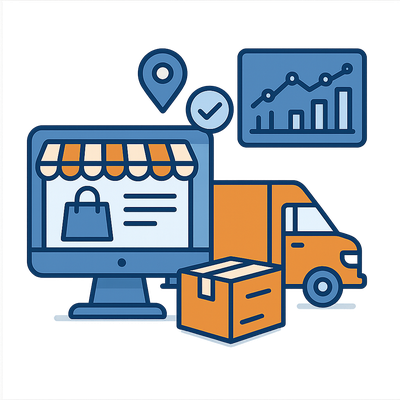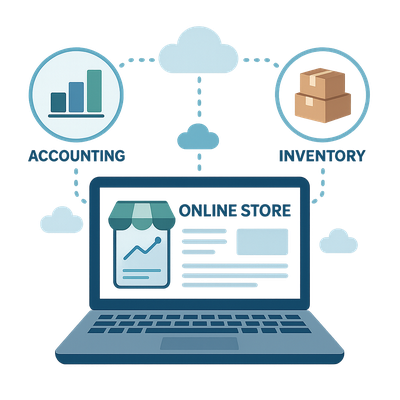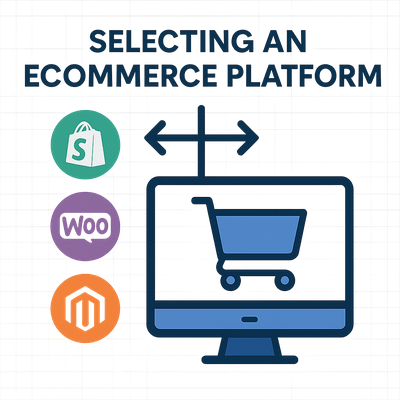
By Geek - October 2025
Shipping is one of the most important parts of running an online store. It is the final step between your business and your customer, and it directly shapes their impression of your brand. A great e-commerce shipping solution can improve efficiency, cut costs, and increase customer satisfaction. The right platform also provides data insights that help your business scale sustainably.
Understanding E-commerce Shipping Solutions
An e-commerce shipping solution is a platform or software that helps online retailers manage order fulfillment, courier selection, tracking, and returns. It integrates with your online store, marketplace, or inventory system to automate the logistics process. Many solutions include rate comparison tools, printing labels, scheduling pickups, and real-time tracking updates for customers.
Some of the leading players in the market include ShipStation, EasyPost, Sendle, and Shippo. These services integrate with major couriers such as Australia Post, FedEx, DHL, and UPS. Each provider offers its own pricing models, integration options, and analytics features that suit different store sizes and shipping volumes.
What to Consider When Choosing a Shipping Solution
Before choosing a shipping platform, it is important to assess your store’s order volume, customer locations, and preferred couriers. Some platforms specialise in domestic deliveries, while others offer global carrier networks and customs management.
- Integration with Your Platform: Ensure the solution connects seamlessly with your online store, whether you use WooCommerce, Shopify, Magento, or other platforms. Integration reduces manual data entry and errors.
- Shipping Rates and Discounts: Some tools negotiate carrier discounts on your behalf or offer aggregated rates that reduce overall costs.
- Automation Options: Rules for packaging, labelling, and courier selection save significant time. Look for conditional automation such as “send via cheapest carrier” or “use express shipping for premium customers.”
- Returns Management: A simplified return process builds trust and repeat business. Choose a platform that automates return labels and notifications.
- Scalability: Select a solution that can grow with your business. If you expect increased volume during seasonal peaks, ensure the platform can handle bulk orders and batch label printing.
- Analytics and Reporting: Look for solutions with dashboards that provide shipping performance metrics, cost summaries, and delivery time insights.
Benefits of Using a Dedicated Shipping Platform
Investing in a professional shipping system provides benefits beyond time savings. It improves order accuracy, enhances communication, and strengthens brand credibility. These systems also reduce operational friction between your store, warehouse, and courier network.
- Efficiency: Automate repetitive tasks such as label creation, courier selection, and tracking updates.
- Accuracy: Reduce shipping errors that lead to lost packages or wrong deliveries.
- Customer Experience: Keep customers informed with branded tracking pages, SMS alerts, and delivery estimates.
- Cost Control: Compare carrier rates instantly and choose the most cost-effective option for each order.
- Scalability: Handle more orders with the same team through automation and workflow optimisation.
ROI Examples and Performance Gains
The return on investment (ROI) from implementing a proper shipping solution can be significant. For small stores processing 50 to 100 orders per day, automation can save several hours daily in manual processing. For high-volume stores, these gains multiply quickly.
- Example 1: A business spending 10 minutes per order on manual label generation saves over 8 hours daily by switching to automated label printing and batch processing.
- Example 2: Using an integrated shipping solution that compares real-time courier rates can reduce delivery costs by 10–25% per order depending on volume and region.
- Example 3: Improved tracking transparency reduces customer support queries about “Where is my order?” by up to 40%, saving both time and customer service costs.
These savings translate into faster fulfillment, fewer errors, and higher customer retention. Businesses that streamline their logistics gain a measurable competitive advantage.
“We develop custom integrations between your store, couriers, and accounting systems to eliminate manual work and improve reliability.”
International vs Domestic Shipping
If you sell to customers outside your country, select a platform that supports international documentation, customs forms, and currency conversion. Many shipping systems offer multi-carrier options for cross-border shipments. For domestic deliveries, ensure that your platform can manage regional couriers and provide accurate delivery time estimates.
Some platforms include built-in address validation, which ensures the entered address is accurate before shipping. This simple feature prevents costly delivery delays and returns.
Integration with Inventory and Accounting Systems
A robust shipping platform should integrate not only with your online store but also with your back-office systems. Connecting to your inventory software ensures real-time stock updates and prevents overselling. Integration with accounting systems such as Xero or QuickBooks simplifies invoice management and cost tracking. Automation between these systems creates a smoother operational flow from purchase to delivery.
Returns and Reverse Logistics
Handling returns efficiently is essential for customer satisfaction and compliance with consumer laws. A well-designed shipping system can manage return authorisations, generate labels, and track returned parcels. Some businesses also use automated return approvals based on product type or order history.
Providing a clear return process increases consumer confidence and encourages repeat purchases. When customers know returns are easy, they are more likely to buy from your store again.
How AI and Analytics Support Shipping Decisions
Many advanced shipping platforms now include AI-driven insights. Predictive analytics can estimate delivery delays based on past carrier performance or seasonal trends. This data allows businesses to proactively choose the best courier and plan inventory replenishment around delivery cycles. AI can also detect anomalies such as repeated late deliveries and suggest alternatives before they affect customer satisfaction.
Regulatory and Compliance Factors
For Australian retailers, compliance with local carrier and data protection regulations is vital. Always ensure that customer data, especially delivery addresses and contact details, are handled securely and in accordance with privacy laws. Some platforms provide built-in data protection and audit trails to support compliance and traceability.
How Can We Help You?
We work with businesses to assess, implement, and optimise e-commerce shipping solutions that suit their needs. Whether you are setting up your first store or migrating from a legacy system, we can help you select the best platform and integrate it with your existing technology. We also develop custom integrations between your store, couriers, and accounting systems to eliminate manual work and improve reliability. Our goal is to make shipping simple, efficient, and scalable for your business.







